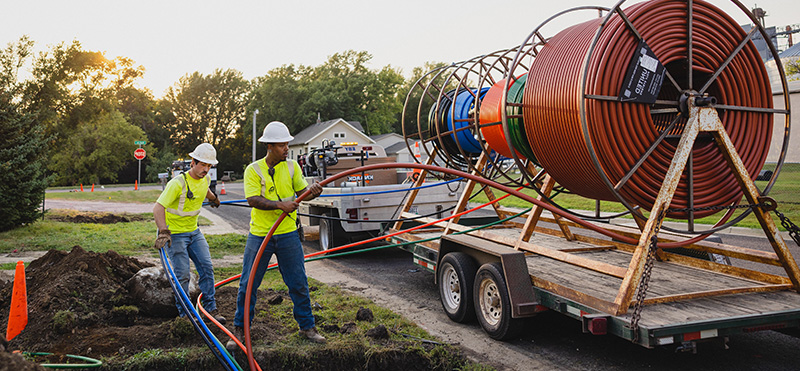It’s been one year since the signing of the bipartisan infrastructure law, earmarking $65 billion to expand broadband access. The goal? To make sure that every American has broadband.
Here’s the status:
- All 50 states, D.C., and U.S. territories are busy preparing for the hundreds of millions of dollars in funding each will receive. It will be up to each state’s broadband office on how to use the funds to increase internet availability and accessibility.
- The Federal Communications Commission (FCC) is working on the best way to distribute the funds. How? By mapping out which parts of the country are currently without a broadband connection. A first draft of the national map was just released November 18.
- Millions of American households are receiving free or discounted internet service through the Affordable Connectivity Program (previously the Emergency Broadband Benefit program), in partnership with broadband providers. See if you qualify here!
Why It Matters: Closing the Digital Divide
Living through a pandemic made it clear that internet access was a must-have for Americans.
With record-setting funding from the infrastructure law, we find ourselves at a once-in-a-generation opportunity to close the digital divide.
But to get us there, states must do three things with the funds they receive:
- Prioritize connecting unserved communities. Invest in projects that focus on areas with no internet service or where broadband exists but is insufficient.
- Protect against fraud, waste, and abuse. Implement safeguards to ensure a competitive and fair bidding process when selecting which projects to greenlight.
- Collaborate with broadband providers. Instead of attempting to reinvent the wheel, states should collaborate and lean on the expertise of those that already know the territory, geography, and client base best.
| How you can help: Join Beyond’s community and stay in the know about how you can help your state be successful at closing its digital divide. |
Dive Deep: A Breakdown of the Bipartisan Infrastructure Law’s Broadband Funding
The federal broadband funding is aimed at accomplishing two things: (1) building the infrastructure needed to expand access, and (2) helping low-income households pay for service.
What’s the funding breakdown?
- $42.45 billion in grants to states and territories to move forward with broadband expansion projects and finance adoption programs.
- $14.2 billion to launch the Affordable Connectivity Program and help low-income families pay for internet service.
Have to time to dive even deeper? Check out this comprehensive overview of how the law allocates the broadband funding.
Next Steps on the Road to 100% Connectivity
- Once states receive their share of the federal broadband funds (which is still TBD), they will have 270 days to create a five-year action plan that outlines their “goals and approaches to broadband access, affordability, equity, and adoption.”
- Now that the FCC’s broadband maps are released, the public will have time to submit mistakes or potential inaccuracies for review.
- The FCC is busy working on reaching the millions of ACP-eligible households who have not yet signed up.
At Beyond, we’re committed to helping all Americans get connected to broadband. To learn more and get involved, visit here.
